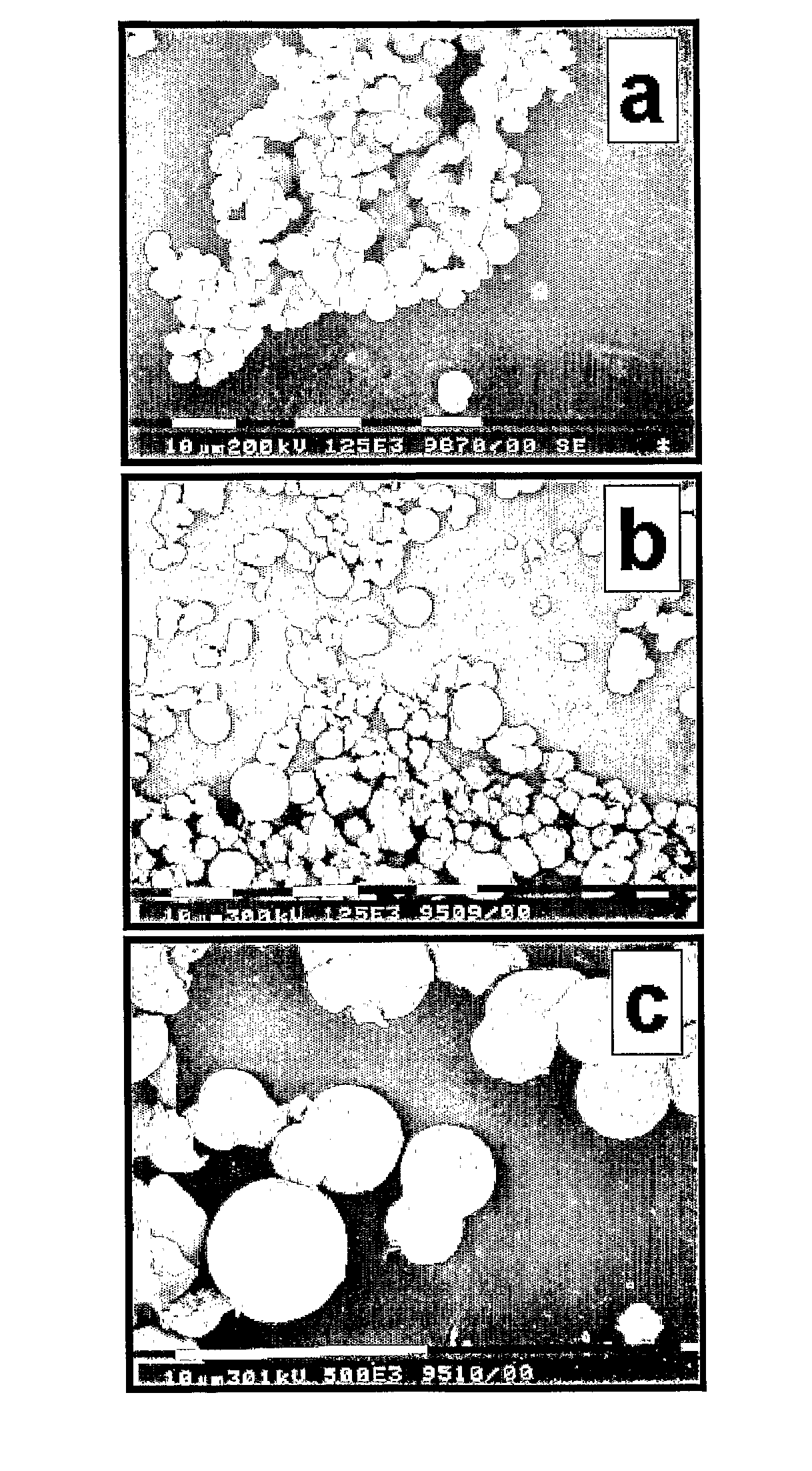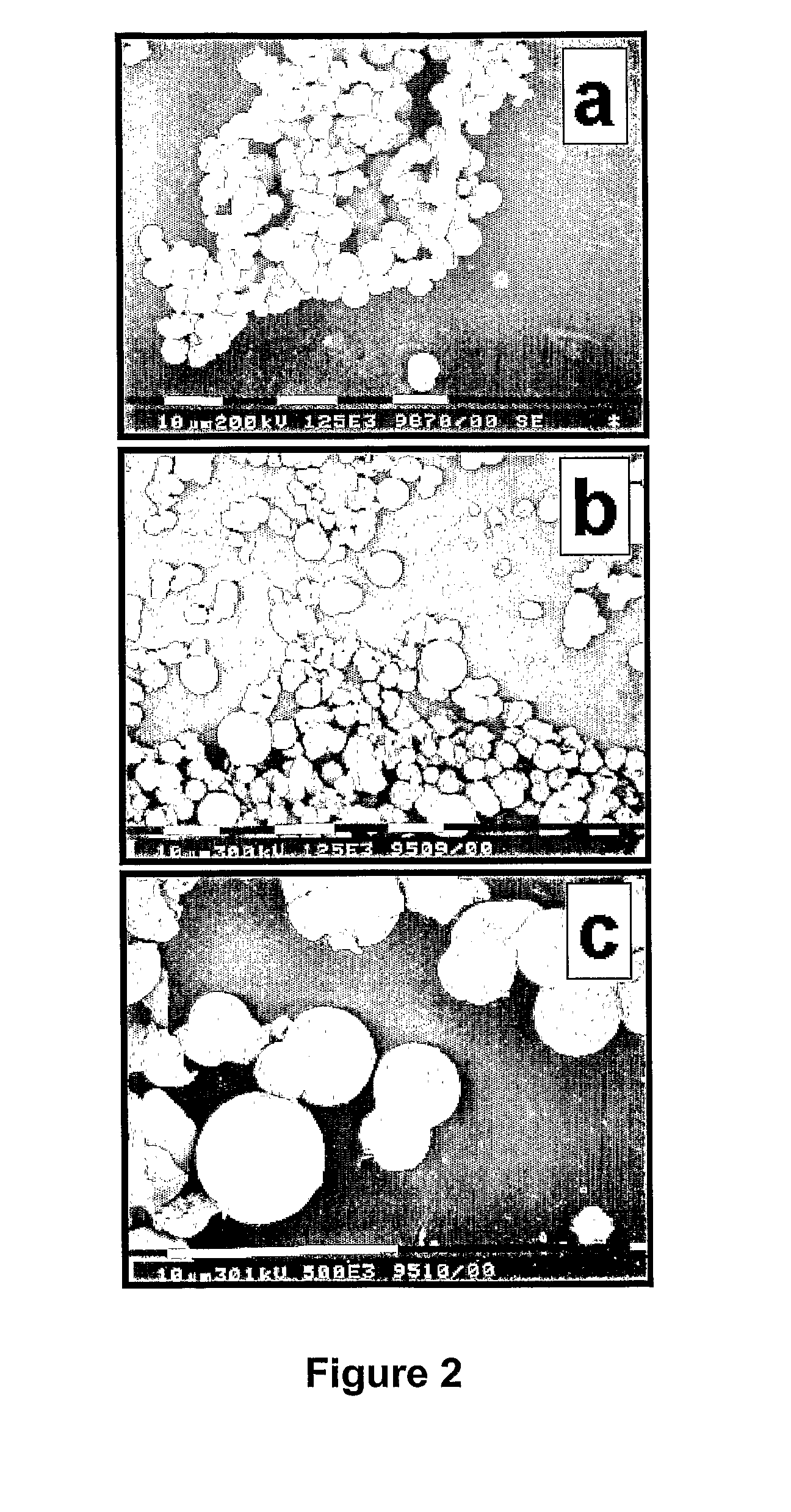Biocompatible Coating of Medical Devices
a biocompatible, medical device technology, applied in medical science, medical preparations, surgery, etc., can solve the problems of high risk of re-closure (restenosis) of the treated artery, inconvenient use, and inability to show convincing
- Summary
- Abstract
- Description
- Claims
- Application Information
AI Technical Summary
Benefits of technology
Problems solved by technology
Method used
Image
Examples
example 1
Production of Zeogrids
[0117] An alternative approach to synthesize nanoscopically arranged molecular sieve material is reported.
[0118] A suspension of Silicalite-1 type zeosil nanoslabs was prepared following a recipe from literature (C. E. A. Kirschhock et al, Angew. Chem. Int. Ed. 2001, 40, 2637; R. Ravishankar, et al, J. Phys. Chem. B 1999, 103, 4960). This nanoslab suspension was diluted with ethanol. Saturated solution of cetyltrimethylammoniumbromide (CTMABr) in ethanol was slowly added to the stirred suspension until a white precipitate formed. The precipitate was recovered by filtration, washed with ethanol and dried. The XRD pattern of the precipitate (FIG. 1a, black trace) revealed the presence of a layered compound showing first and second order diffraction and having a repeat distance of 4.0 nm. The precipitate was heated under flowing oxygen gas to 150° C. and kept under those conditions for 7 days. The sample was cooled to ambient temperature. At this intermediate st...
example 2
Coating of Implantable Devices with a Zeogrid and a Matrix of Silicone Elastomer
Preparation Method for Coated Ti-Plates
Materials
[0125] PDMS-silicone network was synthesised from the following precursors: a siliciumhydride polymer (RTV615B, General Electric Bayer), a siliciumvinyl polymer (RTV615A, General Electric Bayer) and a source of extra hydrides (NM4214). Thin titanium plates were used. The dimensions depended on the experiment-type: 40 mm×20 mm×2 mm for mechanical tests and 15 mm×7 mm×150 μm for in vivo biocompatibility tests.
[0126] Alternatively silicone elastomer solutions can be made with DAP® 100% silicone rubber adhesive (from DAP, Inc., Maryland).
[0127] Alternatively the adjuvant polymers can be incorporated into the silicone network. Such adjuvant polymerscan for instance be polyethylene glycol (PEG) having a molecular weight preferably of about 2 KDa to 1 MDa and most preferably about 2-500 KDa, copolymers of ethylene oxide and propylene oxide (EO / PO) such as P...
example 3
β-Estradiol Release from Zeogrid
[0140] Loading of the zeogrid sample with β-estradiol proceeds as follows. 50 mg β-estradiol is dissolved in 100 ml methylenechloride. 500 mg of zeogrid is suspended in the solution. Everything is stirred during 24 hours in a closed container. After 24 hours, the container is opened and the methylenechloride is evaporated at room temperature. The resulting powder is further dried and kept during 24 hours under reduced pressure to remove the solvent.
[0141] Release of β-estradiol from zeogrids. Simulated body fluid (SBF) was used as dissolution medium. SBF was prepared by first dissolving 1% SLS (Sodium lauryl sulphate) and 0.90% NaCl in distilled water. The solution was mixed with ethanol in a volume ratio solution:ethanol of 24:1.
[0142] The in-vitro release experiments were carried out at room temperature by dispersing 10 mg quantities of the loaded zeogrid into 20 ml quantities of SBF. In order to avoid limitations of the delivery rate by external...
PUM
| Property | Measurement | Unit |
|---|---|---|
| pore size distribution | aaaaa | aaaaa |
| pore size distribution | aaaaa | aaaaa |
| melting temperature | aaaaa | aaaaa |
Abstract
Description
Claims
Application Information
 Login to View More
Login to View More - R&D
- Intellectual Property
- Life Sciences
- Materials
- Tech Scout
- Unparalleled Data Quality
- Higher Quality Content
- 60% Fewer Hallucinations
Browse by: Latest US Patents, China's latest patents, Technical Efficacy Thesaurus, Application Domain, Technology Topic, Popular Technical Reports.
© 2025 PatSnap. All rights reserved.Legal|Privacy policy|Modern Slavery Act Transparency Statement|Sitemap|About US| Contact US: help@patsnap.com



